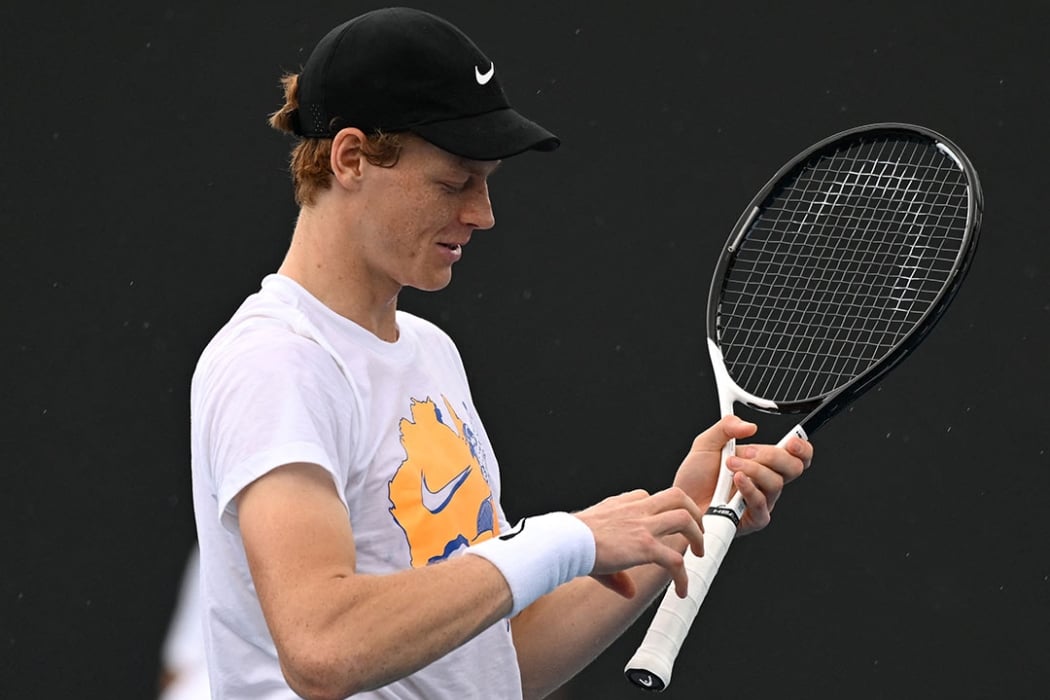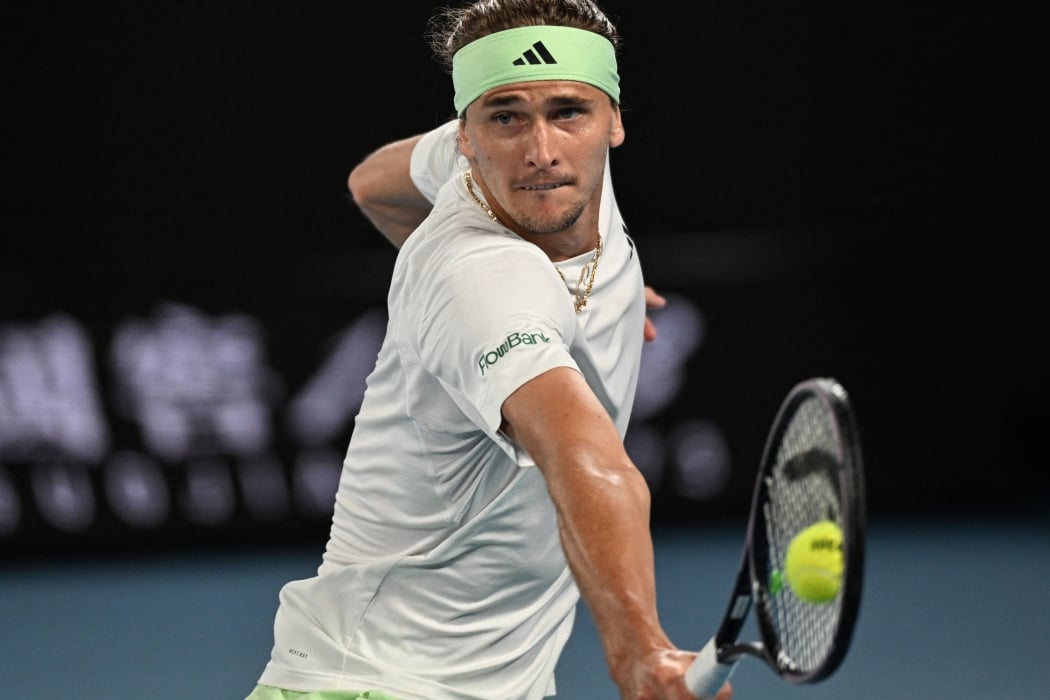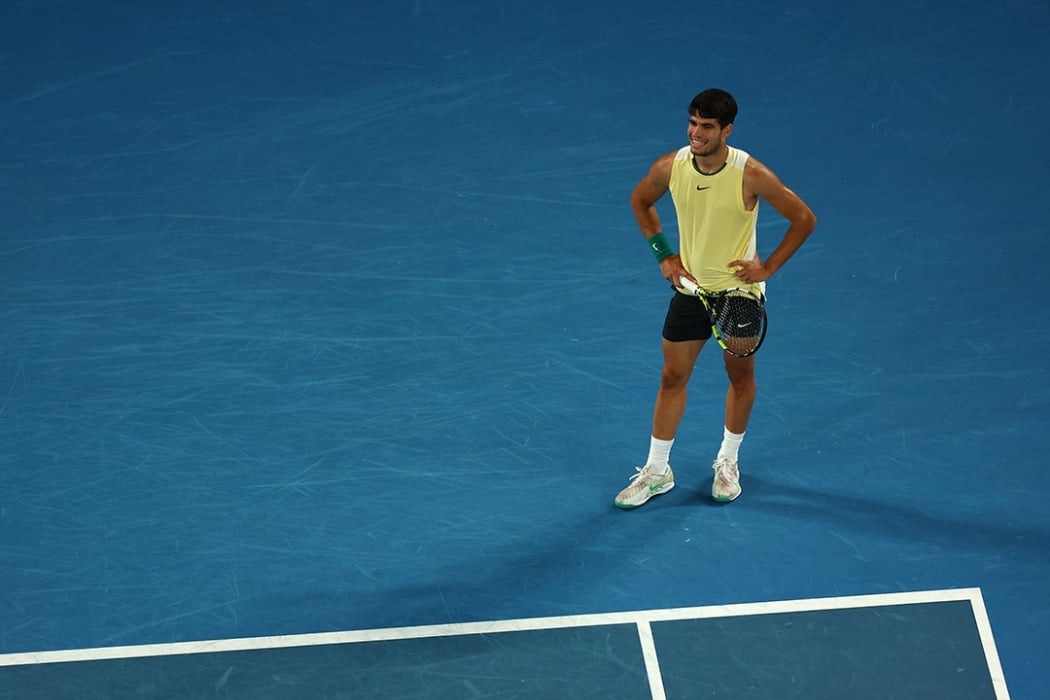Jannik Sinner has not dropped a set en route to the Australian Open 2024 semifinals – and his serving prowess could have something to do with that.
Data reveals the Italian star has the best overall ‘skeletal profile’ among this year’s men’s semifinalists, when factoring in arm speed, leg drive and ball-toss variability.
If these metrics seem unfamiliar, that’s because we’re only just beginning to tap into them.
World-leading skeletal data is helping to better illustrate the serving biomechanics of players at AO 2024, and how this might correlate with performance.
The data comprises several metrics, but some of the best to consider when examining the biomechanics, and effectiveness, of a serve are:
- Arm speed – peak wrist speed of hitting hand, from ball toss release to serve impact
- Leg drive – from the lowest point of maximal knee flexion, the speed at which a player drives up to the point of serve impact
- Separation angle – the degree to which shoulders rotate relative to hips; the greater the separation, the greater the amount of stored energy ready to be released while driving up towards impact point
- Serve disguise – variable distance of ball toss, between the big toe of serve’s front foot and ball impact location
But back to Sinner, who, relative to his semifinal rivals, is performing strongly on all metrics.
He is exploding up into his serve thanks to a leg drive speed of 2.04 metres per second (m/s), faster than all other semifinalists. His arm is whipping through at 9.36 m/s as he executes his serve – the second-fastest arm speed among semifinalists – while he also has the second-lowest ball-toss variability.
He’s placing his ball toss within a relatively narrow horizontal range of 28 centimetres, enhancing disguise given he can hit a variety of serves off a similar toss.
These factors are translating to some impressive serving numbers for Sinner, the AO 2024 tournament leader in break points saved (26/28, or 93 per cent).
AO 2024 TOURNAMENT SERVING STATS: SEMIFINALISTS
Sinner has only been broken twice throughout the entire tournament, winning 67 of his 69 service games. It’s a conversion rate of 97 per cent, by far the best of the four semifinalists (Djokovic is next best with 90.8 per cent).
Until Wednesday night, Carlos Alcaraz was shaping up as one of more potent servers, both biomechanically and in the numbers he was producing.
The Spaniard’s phenomenal leg drive speed of 2.22 m/s was significantly faster than the other remaining quarterfinalists.
”For me, the Alcaraz serve will get you in a different way,” observed Simon Rea, senior data analyst at Tennis Australia and former coach of Nick Kyrgios and Sam Stosur.
“He’s looking to wound you on the serve by challenging the height a returner has to encounter through the spin and bounce he is able to create, with remarkable physicality from his lower body.
“This then forces the returner to be compromised speed-wise and allows Carlos to do even more damage with his forehand on the third shot, rather than simply looking to win the point outright on the serve.”
But Alcaraz was eliminated in the quarterfinals by Alexander Zverev, a player whose ball-toss variability of just 24 centimetres is the lowest of any player remaining in the men’s draw.
Zverev’s next opponent, Daniil Medvedev, has compiled some of the most impressive skeletal data at AO 2024.
He has the fastest arm of the four semifinalists (averaging 9.76 m/s) and also the highest average trunk separation, at 33.6 degrees.
“The higher the average angle between a player’s shoulders and hips, the more energy they can store, more efficiently,” explained Rea.
“This is why he has good speed on serve and contributes to why he is able to impact 74 per cent of his next shots (following the serve) inside the baseline.”
Interestingly, Novak Djokovic’s skeletal serving profile is the fourth best of the semifinalists.
On average, the world No.1 has the slowest arm and leg drive speeds, as well as the second-highest ball-toss variability.
Yet he is one of the more effective servers when compared with his remaining rivals, leading the way for first and second serve points won and with the highest percentage of unreturned serves.
”Clearly the aspect we’re not privy to here is the equipment set-up of these players,” Rea said.
“Does Novak’s equipment allow him to deliver exceptional results in behind his serve?
“Add to that his famous physicality, balance and ball striking off both wings from the baseline, and we’re all still searching for a weakness in his arsenal.”



